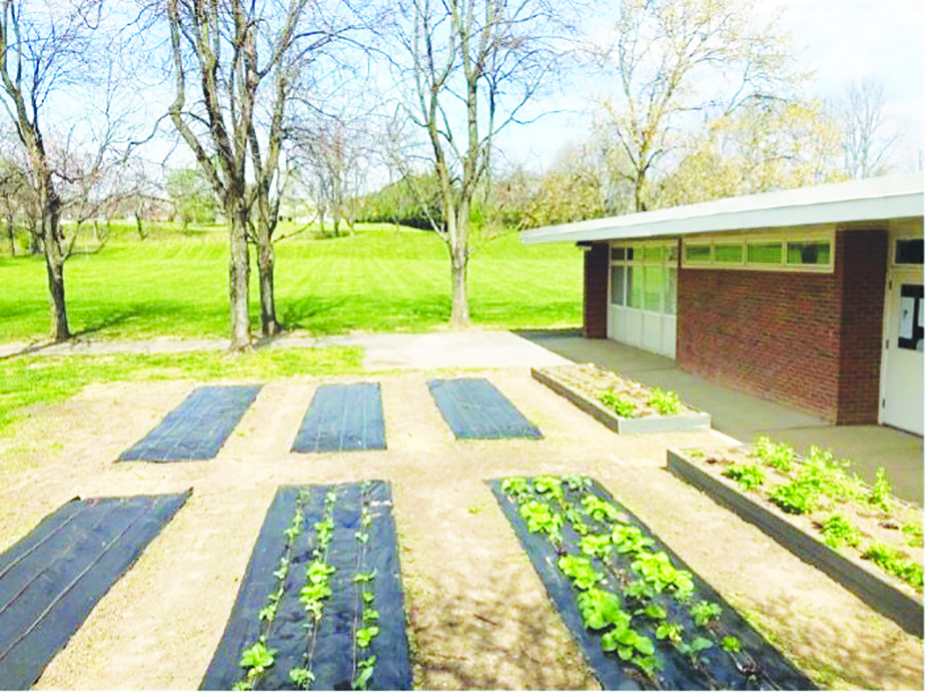
Home vegetable gardeners know that the cost of materials for raised beds, plants, soil, and fertilizer can add
up quickly, but how much of an investment is necessary to grow a successful garden?
Planning, planting at the correct times, and making strategic spending choices are key to growing a successful garden on a budget, says Shawn Jadrnicek, a Roanoke Virginia Cooperative Extension agent.
Raised beds, which usually consist of a wood or metal frame filled with soil, are a popular choice for home vegetable gardeners. A cheaper option than constructing a frame with purchased materials is to build a mounded raised bed by piling soil into a mound that can be covered with a weed barrier such as mulch or plastic.
“Wooden or metal raised beds are not necessary,” Jadrnicek said. “You can build a raised bed with mounded soil. If your site is well-drained, raised beds are not even necessary. You can plant right in the ground.”
For new gardeners or those wishing to expand by creating a new bed, Jadrnicek recommends preparing the location for a new bed by using a light-excluding tarp to kill turfgrass.
“You need a UV-resistant tarp or landscape fabric to cover the area, then you can pin down the edges with staples or use weight bags filled with rocks or sand to keep the material in place,” Jadrnicek said. “In winter, it can take five weeks to kill everything underneath, but in the summer when it is hot, you can kill everything in a week depending on the vegetation growing underneath.”
When they’re actively growing during the summer, perennial weeds like wiregrass may take six weeks or longer to completely kill.
After tarping, the soil is usually loose from increased earthworm activity as the sod or vegetation decomposes, so tilling the area may not be necessary. If your soil test indicates you need to change the pH by adding lime or Sulphur, or if you need phosphorus, those materials should be mixed into the soil to make them effective.
Purchasing expensive bagged soil or other amendments may not be necessary either. To determine what amendments your soil needs, get a soil test by contacting your local Virginia Cooperative Extension office.
“It almost always helps to bring in compost or good quality bagged soil to increase organic matter, but may not be necessary, especially if you’re on a budget,” said Jadrnicek. “If you think of a large farm, they don’t bring in soil amendments on that scale. Even a quarter inch of compost makes a big difference.”
Good-quality seeds do make a difference, especially for gardeners who want to save money and labor by avoiding disease problems.
“A lot of people want to grow heirlooms, which can be susceptible to pest and disease problems that make them less likely to succeed,” Jadrnicek said. “Hybrid varieties can have disease and pest-resistant genetics and can produce a higher yield.”
Finally, good irrigation is critical for success in the vegetable garden, according to Jadrnicek.
“Irrigation can make a big difference in yields,” he said. “Giving the plants the right amount of water by hand can take a lot of time, and growers hand-watering typically don’t give enough. If you do not water enough, you are not going to maximize yields, and if a plant is stressed by lack of water, you are going to have more pest/disease problems.
“If you must prioritize, spend your money on an automated drip-irrigation system rather than a raised bed. Irrigation will make gardening much easier and much more productive. If you’ve got to choose, spend on irrigation and good quality seeds,” Jadrnicek said.
– Written by Devon Johnson


